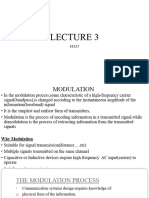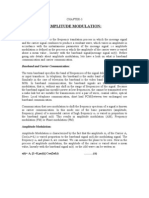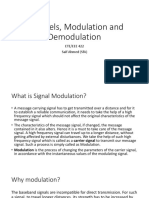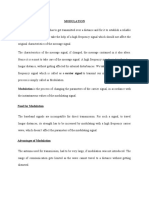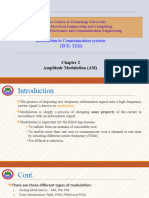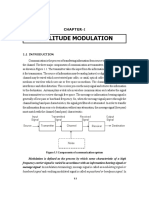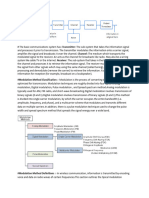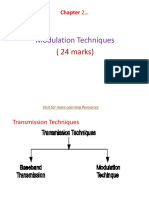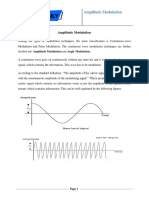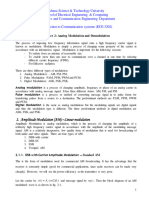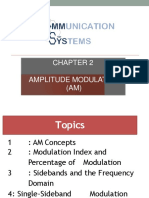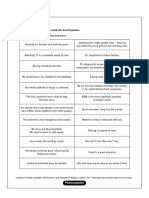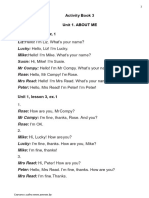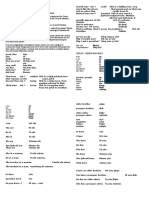0% found this document useful (0 votes)
6 views40 pagesLecture 1
The document covers the fundamentals of data and signal types, distinguishing between analog and digital forms, and discusses the importance of composite signals in data communications. It explains transmission impairments such as attenuation, distortion, and noise, along with their calculations. Additionally, it introduces modulation and demodulation processes, types of modulation (AM, FM, PM), and details on amplitude modulation, including its effects and calculations.
Uploaded by
ramezCopyright
© © All Rights Reserved
We take content rights seriously. If you suspect this is your content, claim it here.
Available Formats
Download as PDF, TXT or read online on Scribd
0% found this document useful (0 votes)
6 views40 pagesLecture 1
The document covers the fundamentals of data and signal types, distinguishing between analog and digital forms, and discusses the importance of composite signals in data communications. It explains transmission impairments such as attenuation, distortion, and noise, along with their calculations. Additionally, it introduces modulation and demodulation processes, types of modulation (AM, FM, PM), and details on amplitude modulation, including its effects and calculations.
Uploaded by
ramezCopyright
© © All Rights Reserved
We take content rights seriously. If you suspect this is your content, claim it here.
Available Formats
Download as PDF, TXT or read online on Scribd
/ 40
